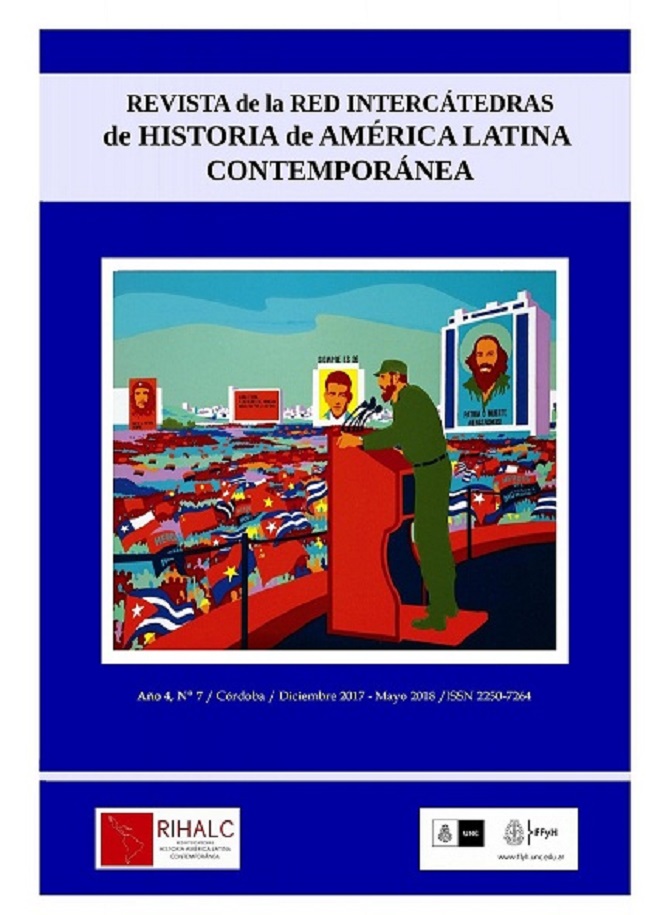Wildenstein in Buenos Aires or the double game of identifications and silences
Keywords:
Art market, Buenos Aires, Second World War, WildensteinAbstract
Valuing and preserving the artistic heritage coming from the destruction and looting because of the Second World War in Europe is an idea which encouraged a wide number of auctions and sales of works of art in the commercial galleries of Buenos Aires during the forties. However, the discourse displayed in catalogues and press articles, which appealed to the role of collectionism in that dramatic context, contrasts with the absence of information regarding the origins of the works which could eventually be linked with the Nazi plundering. The mission of preserving the high culture and the feeling of inheriting part of the European tradition did not seem to leave room for any kind of ethical questioning among the Buenos Aires high bourgeoisie. In the context of a commercial marketing that by the middle of the 20th century showed strong competitors regarding the importance of paintings, the subsidiary of Wildenstein Gallery stood out in Buenos Aires. It has settled in the city between 1939 and 1940, with the reputation of a successful performance in Paris with subsidiaries in London and New York.
The purpose is to explore certain aspects of Wildenstein’s development during its first years in the Argentinean capital. The focus is in the strategies of insertion in the commercial space as well as on those exhibition policies used to cover the demand of European painting at the same time as it contributed to encourage that double material and symbolic ownership, favored by the dispersion of the heritage. An attempt is made to analyze the role of the gallery within that double game of identifications and concealments articulated by a sector of the artistic cartography in the context of World War II and which partly persists up to the present.
References
AAVV (1995): Europa de posguerra. Arte después del diluvio 1945-1965. Fundación La Caixa, Barcelona.
ALFORD Kenneth D. (2012): Hermann Göring and the Nazi art collection: the looting of Europe’s art treasures and their dispersal after World War II. McFarland & Company, Jefferson.
BAUDRILLARD, Jean [1972] (1999): Crítica de la economía política del signo. Siglo XXI, Madrid.
BAYER Thomas M. y John R. Page (2011): The development of the Art Market in England: Money as a muse, 1730-1900. Pickering & Chatto, Londres.
BERMEJO, Talía (2011): El arte argentino entre pasiones privadas y marchands d’art. Consumo y mercado artístico en Buenos Aires, 1920-1960. En M. I. Baldasarre y S. Dolinko (eds.). Travesías de la imagen. Historias de las artes visuales en la Argentina, Vol. 1. Archivos del CAIA 4-Eduntref, Buenos Aires.
BERMEJO, Talía (2015): “Simón Scheimberg y Luis Seoane”, en GOYA. Revista de Arte, Madrid, nº 351, Fundación Lázaro Galdiano, pp. 128-151.
BISSO, Andrés (2005): Acción Argentina. Un antifascismo nacional en tiempos de guerra mundial. Prometeo, Buenos Aires.
CATTARUZZA, Alejandro (dir. de tomo) (2001): Nueva historia argentina. Crisis económica, avance del estado e incertidumbre política (1930-1943). Tomo VII. Sudamericana, Barcelona.
FELICIANO, Héctor (2004): El museo desaparecido: los nazis y la confiscación de obras de arte. Emecé, Buenos Aires.
FLECK, Robert (2014): El sistema del arte en el siglo XXI. Museos, artistas, coleccionistas, galerías. Mardulce, Buenos Aires.
GIUNTA, Andrea (2001): Vanguardia, internacionalismo y política. Arte argentino en los años sesenta. Paidós, Buenos Aires.
GRAW, Isabelle [2008] (2013): ¿Cuánto vale el arte? Mercado, especulación y cultura de la modernidad. Mardulce, Buenos Aires.
HASKELL, Francis [2000] (2002): El museo efímero. Los maestros antiguos y el auge de las exposiciones artísticas, Barcelona.
LVOVICH, Daniel (2006): “El golpe de estado de 1943, Perón y el problema del antisemitismo”, en Marcela García Sebastiani (ed.),”Fascismo y antifascismo. Peronismo y antiperonismo. Conflictos políticos e ideológicos en la Argentina (1930-1955). Iberoamericana/Vervuert Verlag, Madrid/ Frankfurt, pp. 107 – 132.
MORGENFELD, Leandro Ariel (2009): “La neutralidad argentina y el sistema interamericano: Panamá, La Habana y Río de Janeiro (1939-1942)”, Ciclos en la Historia, la Economía y la Sociedad, Buenos Aires, Vol. 18, pp. 145 – 172.
MOULIN Raymonde [1967] (1989) : Le Marché de la peinture en France. Éditions de Minuit, París.
MOULIN Raymonde (2012): El mercado de arte. Mundialización y nuevas tecnologías. La marca editora, Buenos Aires.
NEIBURG, Federico (1998): Los intelectuales y la invención del peronismo. Estudios de antropología social y cultural. Alianza, Buenos Aires.
NICHOLAS, Lynn H. (2007): El saqueo de Europa. El destino de los tesoros artísticos europeos durante el Tercer Reich y la Segunda Guerra Mundial. Ariel, Barcelona.
SAARINEN, Aline Bernstein (1958): The Proud Possessors: The Lives, Times, and Tastes of Some Adventurous American Art Collectors. Random House, New York.
TOMKINS, C. (1989): Merchants and Masterpieces: The Story of the Metropolitan Museum of Art. Henry Holt & Co., New York.
TORRE, Juan Carlos (dir. de tomo) (2002): Nueva historia argentina. Los años peronistas (1943-1955). Tomo VIII. Sudamericana, Barcelona.
VELTHUIS Olav (2005): Talkin Prices. Symbolic Meanings of Prices on the Market for Contemporary Art. Princeton University Press, New Jersey.
WHITE Harrison y Cynthia White [1965] (1993): Canvases and Careers. Institutional change in the French Panting World. The University of Chicago Press, Chicago.
WILDENSTEIN Daniel, Yves Stavridès (2006): Marchands d´art. Plon, Paris.
Downloads
Published
Issue
Section
License
Aquellos autores/as que tengan publicaciones con esta revista, aceptan los términos siguientes:
- Los autores/as conservarán sus derechos de autor y garantizarán a la revista el derecho de primera publicación de su obra, el cuál estará simultáneamente sujeto a la Licencia de reconocimiento de Creative Commons que permite la libre distribución con mención de su(s) creadores, no permite el uso comercial ni las obras derivadas. Los autores, al enviar el artículo, acuerdan publicarlo bajo esta licencia..
- Los autores/as podrán adoptar otros acuerdos de licencia no exclusiva de distribución de la versión de la obra publicada (p. ej.: depositarla en un archivo telemático institucional o publicarla en un volumen monográfico) siempre que se indique la publicación inicial en esta revista.
- Se permite y recomienda a los autores/as difundir su obra a través de Internet (p. ej.: en archivos telemáticos institucionales o en su página web) después del proceso de publicación.



